The Stone Flower
7.4 /10 1 Votes7.4
Director Aleksandr Ptushko Genre Fantasy Language Russian | 7.2/10 IMDb Cinematography Fyodor Provorov Duration Country Soviet Union | |||||||||||||||||||||||||||||||||
 | ||||||||||||||||||||||||||||||||||
Release date September 1946 (1946-09) Cast Vladimir Druzhnikov (Danilo), Yekaterina Derevshchikova (Katya), Tamara Makarova (Khozyayka Medhoy Gori), Mikhail Troyanovsky (Prokopych), Aleksandr Kleberer (Dedushka slyshko), Mikhail Yanshin (Severyan)Similar movies Soviet Union movies, Fantasy movies | ||||||||||||||||||||||||||||||||||
"The Stone Flower" (Russian: Каменный цветок, Kamennyj tsvetok; [ˈkamʲənʲɪj tsvʲɪˈtok]), also known as "The Flower of Stone", is a folk tale (also known as skaz) of the Ural region of Russia collected and reworked by Pavel Bazhov, and published in Literaturnaya Gazeta on 10 May 1938 and in Uralsky Sovremennik. It was later released as a part of the The Malachite Box collection. "The Stone Flower" is considered to be one of the best stories in the collection. The story was translated from Russian into English by Alan Moray Williams in 1944, and several times after that.
Contents
- Publication
- Plot summary
- Themes
- The Master Craftsman
- Other books
- Reception and legacy
- Films
- Theatre
- References
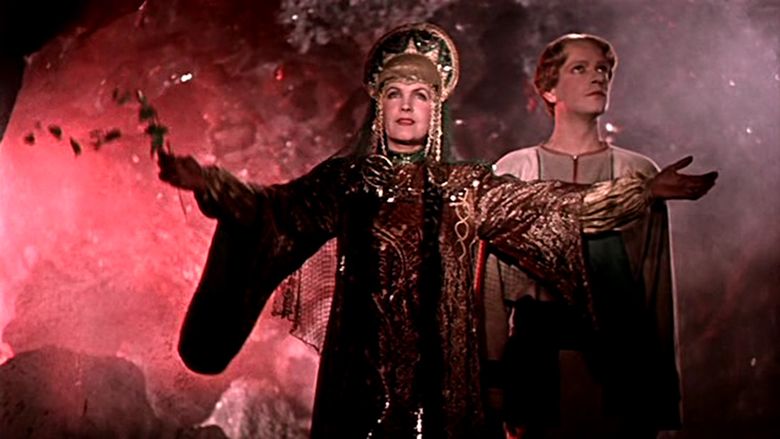
Pavel Bazhov indicated that all his stories can be divided into two groups based on tone: "child-toned" (e.g. "Silver Hoof") with simple plots, children as the main characters, and a happy ending, and "adult-toned". He called "The Stone Flower" the "adult-toned" story.
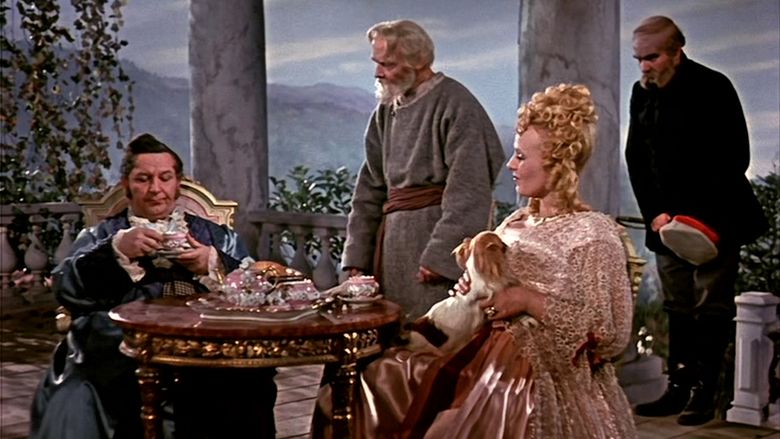
The tale is told from the point of view of the imaginary Grandpa Slyshko (Russian: Дед Слышко, tr. Ded Slyshko; lit. "Old Man Listenhere").
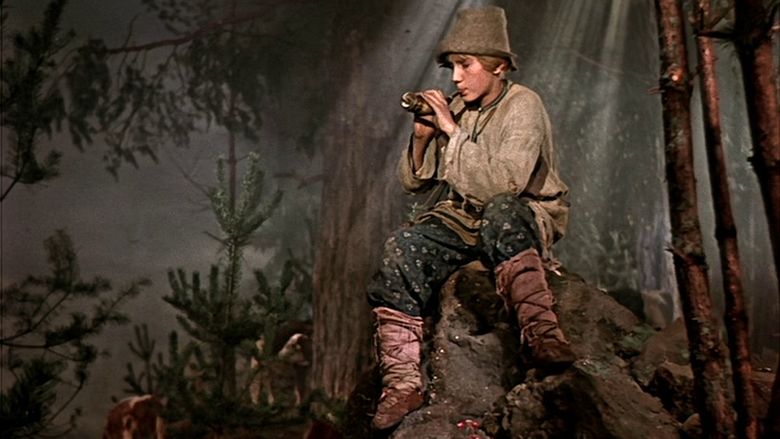
Publication
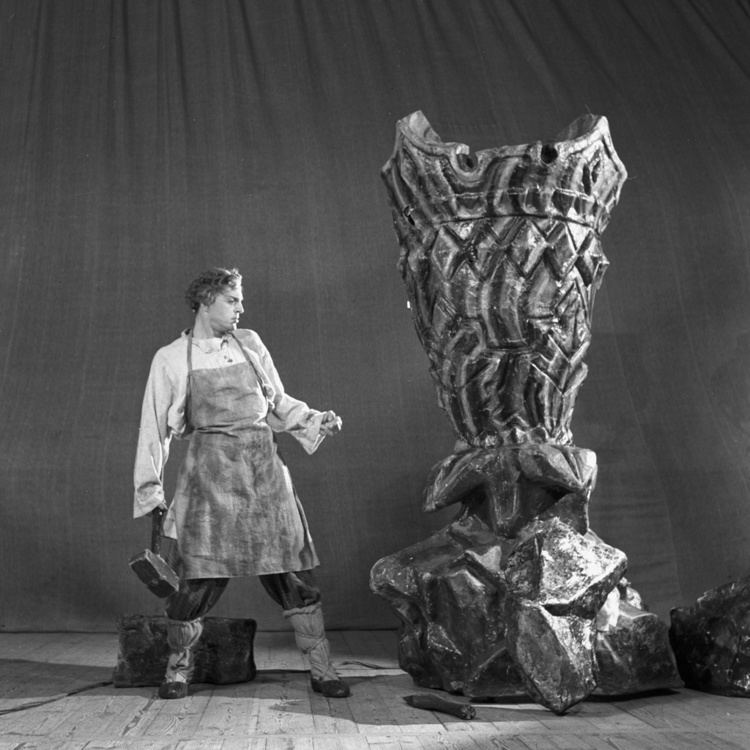
The Moscow critic Viktor Pertsov read the manuscript of "The Stone Flower" in the spring of 1938, when he travelled across the Urals with his literary lectures. He was very impressed bt it and published the shortened story in Literaturnaya Gazeta on 10 May 1938. His complimenting review The fairy tales of the Old Urals (Russian: Сказки старого Урала, tr. Skazki starogo Urala) which accompanied the publication.
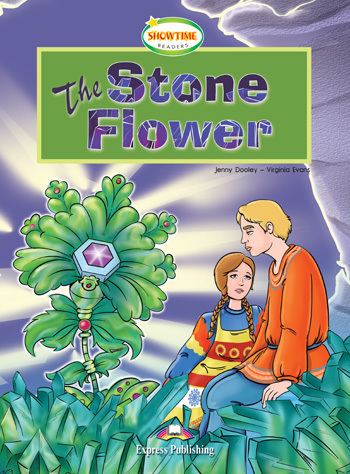
After the appearance in Literaturnaya Gazeta, the story was published in first volume of the Uralsky Sovremennik in 1938. It was later released as a part of the The Malachite Box collection on 28 January 1939.
In 1944 the story was translated from Russian into English by Alan Moray Williams and published by Hutchinson as a part of the The Malachite Casket: Tales from the Urals collection. The title was translated as "The Stone Flower". In the 1950s translation of The Malachite Casket was made by Eve Manning The story was published as "The Flower of Stone".
The story was published in the collection Russian Magic Tales from Pushkin to Platonov, published by Penguin Books in 2012. The title was translated by Anna Gunin as "The Stone Flower".
Plot summary
The main character of the story, Danilo, is a weakling and a scatterbrain, and people from the village find him strange. He is sent to study under the stone-craftsman Prokopich. One day he is given an order to make a fine-molded cup, which he creates after a thornapple. It turns out smooth and neat, but not beautiful enough for Danilo's liking. He is dissatisfied with the result. He says that even the simplest flower "brings joy to your heart", but his stone cup will bring joy to no one. Danilo feels as if he just spoils the stone. An old man tells him the legend that a most beautiful Stone Flower grows in the domain of the Mistress of the Copper Mountain, and those who see it start to understand the beauty of stone, but "life loses all its sweetness" for them. They become the Mistress's mountain craftsmen forever. Danilo's fiancée Katyenka asks him to forget it, but Danilo longs to see the Flower. He goes to the copper mine and finds the Mistress of the Copper Mountain. He begs her to show him the Flower. The Mistress reminds him of his fiancée and warns Danilo that he would never want to go back to his people, but he insists. She then shows him the Malachite Flower. Danilo goes back to the village, destroys his stone cup and then disappears. "Some said he'd taken leave of his senses and died somewhere in the woods, but others said the Mistress had taken him to her mountain workshop forever".
Themes
During Soviet times, every edition of The Malachite Box was usually prefaced by an essay by a famous writer or scholar, commenting on the creativity of the Ural miners, cruel landlords, social oppression and the "great workers unbroken by the centuries of slavery". The later scholars focused more on the relationship of the characters with nature, the Mountain and the mysterious in general. Maya Nikulina comments that Danilo is the creator who is absolutely free from all ideological, social and political contexts. His talent comes from the connection with the secret force, which controls all his movements. Moreover, the local landlord, while he exist, is unimportant for Danilo's story. Danila's issues with his employer are purely aesthetic, i. e. a custom-made vase was ordered, but Danilo is the artist, he only desires to understand beauty of stone, and this desire takes away him away from life.
The Stone Flower is the embodiment of the absolute magic power of stone and the absolute beauty, which is beyond mortals' reach.
Many noted that the Mistress' world represents the realm of the dead, which is emphasized not only by its location underneath the human world but also mostly by its mirror-like, uncanny, imitation or negation of the living world. Everything looks strange there, even the trees are cold and smooth like stone. The Mistress herself does not ear or drink, she does not leave any traces, her clothing is made of stone and so on. The Mountain connects her to the world of the living, and Danilo metaphorically died for the world, when we went to her. Mesmerized by the Flower, Danilo feels at his own wedding as if at a funeral. A contact with the Mistress is a symbolic manifestation of death. Marina Balina noted that as one of the "mountain spirits", she does not hesitate to kill those who did not pass her tests, but even those who had been rewarded by her do not live happily ever after, as shown with Stepan in "The Mistress of the Copper Mountain". The Mistress was also interpreted as the manifestation of the female sexuality. "The Mistress exudes sexual attraction and appears as its powerful source". Mark Lipovetsky commented that Mistress embodies the struggle and unity between Eros and Thanatos. The Flower is made of cold stone for that very reason: it points at death along with sexuality. All sexual references in Pavel Bazhov's stories are very subtle, owing to Soviet puritanism.
Danilo is a classical Bazhov's binary character. On the one hand, he is a truth seeker and a talented craftsman, on the other hand, he is an outsider, who violates social norms, destroys the lives of the loved ones and his own. The author of The Fairy Tale Encyclopedia suggests that the Mistress represents the conflict between human kind and nature. She compares the character with Mephistopheles, because a human needs to wager his soul with the Mistress in order to get the ultimate knowledge. Danilo wagers his soul for exceptional craftsmanship skills. However the Mistress does not force anyone to abandon their moral values, and therefore "is not painted in dark colours". Lyudmila Skorino believed that she represented the nature of the Urals, which inspires a creative person with its beauty.
Denis Zherdev commented that the Mistress's female domain is the world of chaos, destruction and spontaneous uncontrolled acts of creation (human craftsmen are needed for the controlled creation). Although the characters are so familiar with the female world that the appearance of the Mistress is regarded as almost natural and even expected, the female domain collides with the ordered factory world, and brings in randomness, variability, unpredictability and capriciousness. Direct contact with the female power is a violation of the world order and therefore brings destruction or chaos.
One of the themes is how to become a true artist and the subsequent self-fulfilment. The Soviet critics' point of view was that the drama of Danilo came from the fact that he was a serf and therefore did not receive the necessary training to complete the task. However modern critics disagree and state that the plot of the artist's dissatisfaction is very popular in literature. Just like in the Russian poem The Sylph, written by Vladimir Odoyevsky, Bazhov rises the issue that the artist can reach his ideal only when he comes in with otherworldly.
"The Master Craftsman"
"The Master Craftsman" (Russian: Горный мастер, tr. Gornyj master), was serialized in Na Smenu! from 14 to 26 January 1939, in Oktyabr (issues 5–6), and in Rabotnitsa magazine (issues 18–19). In 1944 the story was translated from Russian into English by Alan Moray Williams and published by Hutchinson as a part of the The Malachite Casket: Tales from the Urals collection. The title was translated as "The Master Craftsman". In the 1950s translation of The Malachite Casket, made by Eve Manning, the story was published as "The Mountain Craftsman". The story was published in the collection Russian Magic Tales from Pushkin to Platonov, published by Penguin Books in 2012. The title was translated by Anna Gunin as "The Mountain Master".
The story begins after the disappearance of Danilo. For several years Danilo's betrothed Katyenka (Katya) waits for him and stays unmarried despite the fact that everyone laughs at her. She is the only person who believes that Danilo will return. She is quickly nicknamed "Dead Man's Bride". When both of her parents die, she moves away from her family and goes to Danilo's house and takes care of his old teacher Prokopich, although she knows that living with a man can ruin her reputation. Prokopich welcomes her happily. He earns some money by gem-cutting, Katya runs the house, cooks, and does the gardening. When Prokopich gets too old to work, Katya realizes that she cannot possibly support herself by needlework alone. She asks him to teach her some stone craft. Prokopich laughs at first, because he does not believe gem-cutting is a suitable job for a woman, but soon relents. He teaches her how to work with malachite. After he dies, Katya decides to live in the house alone. Her strange behaviour, her refusal to marry someone and lead a normal life cause people at the village to think that she is insane or even a witch, but Katya firmly believes that Danilo will "learn all he wants to know, there in the mountain, and then he'll come". She wants to try making medallions and selling them. There are no gemstones left, so she goes to the forest, finds an exceptional piece of gemstone and starts working. After the medallions are finished, she goes to the town to the merchant who used to buy Prokopich's work. He reluctantly buys them all, because her work is very beautiful. Katya feels as if this was a token from Danilo. She runs back to the forest and starts calling for him. The Mistress of the Copper Mountain appears. Katya bravely demands that she gives Danilo back. The Mistress takes her to Danilo and says: "Well, Danilo the Master Craftsman, now you must choose. If you go with her you forget all that is mine, if you remain here, them you must forget her and all living people". Danilo chooses Katya, saying that he thinks about her every moment. The Mistress is pleased with Katya's bravery and rewards her by letting Danilo remember everything that he had learned in the Mountain. She then warns Danilo to never tell anyone about his life there. The couple thanks the Mistress and goes back to the village. When asked about his disappearance, Danilo claims that he simply left to Kolyvan to train under another craftsman. He marries Katya. His works is extraordinary, and everyone starts calling him "the mountain craftsman".
Other books
This family's story continues in "A Fragile Twig", published in 1940. "A Fragile Twig" focuses on Katyenka and Danilo's son Mitya. This is the last tale about Danilo's family. Bazhov had plans for the fourth story about Danilo's family, but it was never written. In the interview to a Soviet newspaper Vechernyaya Moskva the writer said: "I am going to finish "The Stone Flower" story. I would like to write about the heirs of the protagonist, Danilo, [I would like] to write about their remarkable skills and aspirations for the future. I'm thinking about leading the story to the present day". This plan was later abandoned.
Reception and legacy
Danilo the Craftsman became one of the best known characters of Bazhov's tales. The fairy tale inspired numerous adaptations, including films and stage adaptations. It is included in the school reading curriculum. "The Stone Flower" is typically adapted with "The Master Craftsman".
It generated a Russian catchphrase "How did that Stone Flower come out?" (Russian: "Не выходит у тебя Каменный цветок?", tr. Ne vykhodit u tebja Kamennyj tsvetok?, lit. "Naught came of your Stone Flower?"), derived from these dialogue:
"Well, Danilo the Craftsman, so naught came of your thornapple?"
"No, naught came of it," he said.
The style of the story was praised.
Films
Theatre
References
The Stone Flower WikipediaThe Stone Flower IMDb The Stone Flower themoviedb.org
